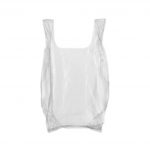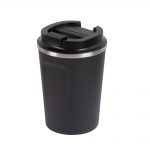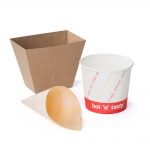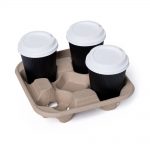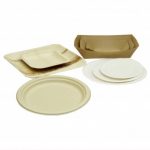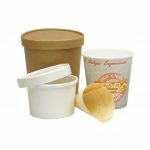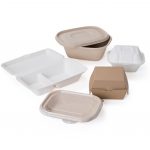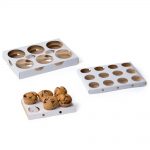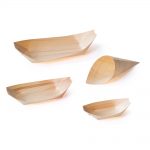Blog Categories
- Tips and Advice (55)
- Sustainability (26)
- Trends and Innovations (25)
- Tutorials and Templates (6)
- Regulations (2)
Jul
19
Posted on September 21, 2016 by Ash Bennett
19
5 Tips for a Cool Café Fitout
Posted on September 21, 2016 by Ash Bennett
The best café fitouts combine personality with practicality. Customers will enjoy returning to a café with character, but charm alone won’t sustain your business. Use space well to fit out a café that’s inviting, cleverly planned and memorable.
There are many elements to consider when fitting out your café, but these five are key:
1. Use of features
Whether your café is in an office block or a refurbished warehouse, you’ll find yourself working around existing features. It’s most convenient — and therefore ideal — to set up in a space already suited to your needs, such as a building that has already been a café or restaurant. However, this isn’t always possible, so don’t underestimate the possibilities present in other types of spaces.
Cafés have been set up in all kinds of buildings: former houses, factories, pubs, laneways, gaols, barns. And not only have such cafés built on what was already there, but they have also made that history an active part of their atmosphere.

Some cafés decorate with exposed brickwork or pipes, original shelving and fixtures, old barrels, lofts, cabinets, alcoves or fireplaces. Not all of these fittings will suit your business, particularly if you’re aiming for a modern and professional feel, but they can add character to a place when they fit its look. And not only are such features decorative, but they can also be useful. Why put in new shelves when there are already some built into your wall? Why tear out piping when it can hold lighting? This is your chance to be creative, and customers will notice.
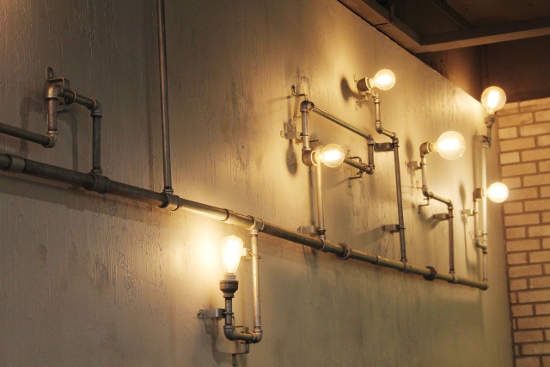
Refurbishing can be an expensive and lengthy process, particularly if you own a space and decide to gut it. Building on an original design can therefore not only give your business personality and history, but also save you cost and time.
2. Use of space
You don’t need to practise Feng Shui to understand that a harmonious space is important. Why do customers choose to eat out instead of at home? There are many different reasons, and an inability to cook is only one possibility. Customers want to visit interesting places that offer an eating or drinking experience they can’t find elsewhere. Customers want inviting spaces furnished with character, not too crowded or too bare, and relaxing to hang out in.
So avoid awkward corners and obstacles. If you can’t remove that pillar in the middle of the room, turn it into a feature instead of a block — decorate it, display menus on it, leave space around it, position the things you can control so that the pillar doesn’t affect them.
Don’t cram customers too close together, but don’t space tables too far apart, either. A crowded, noisy café isn’t enjoyable to hang out in, but a sparsely furnished café feels empty and uninviting. Aim for a balance between cosy and spacious.
3. Lighting

Customers don’t find dim rooms inviting — for one thing, it’s hard to read a menu in poor light. Good lighting makes your space welcoming. Dark cafés feel neglected and gloomy, while overly bright cafés can feel bleached and impersonal.
Choose lighting that matches your décor — a warm glow, for example, will go well with wooden flooring and walls. Place your lights strategically, so that they shine towards tables and the counter rather than leaving customers in dark corners. Choose interesting lights; there are many styles available, and some are as much works of art as the pictures you place on the wall. Keep practicalities in mind — ensure your wiring is reliable and your lights easily accessible.
Consider light fixtures, but also natural light. Large windows will create atmosphere and hopefully lower your electricity bills. However, how do things sit in position to your windows? Consider which times of day the sunlight hits your café, and whether it makes any areas less inviting. Customers may avoid tables at which the sun gets in their eyes, which makes those tables wasted space during certain periods.
4. Seating

It may sound obvious that comfortable seating is important, but it’s a fact easily forgotten when you see a cool chair design that sacrifices comfort to style (or to affordability). If you want customers to linger, it’s a worthwhile investment to place them in chairs they’ll settle into. This is particularly true of outdoor seating, which too often relies on hard metal or uncomfortable plastic.
That said, a cool design is also important. Your chairs and tables will be the dominant furniture in your café, and they should suit your look. Match your tables to your chairs and pick furniture that complements your walls and floors. Wooden furnishings, for example, go well with a ‘rustic’ look, painted walls, and potted plants.
Ensure there’s a reasonable amount of seating. It’s easy to underestimate how many people can comfortably fit in even a small café, and customers turned away may never come back.
5. Theme
This is the tip that all the others keep coming back to: your fitout should match the intended atmosphere of your business. From flooring and fixtures to seating and signage, every element contributes to how your business presents itself. So choose the fittings that will match your café’s appearance to its feel, giving your customers the experience they want.

The above tips are as much about how you use your space as how you furnish it, but a cool fitout is efficient and looks good at the same time. Choose your style with both functionality and appearance in mind, and your fitout will set you apart.






